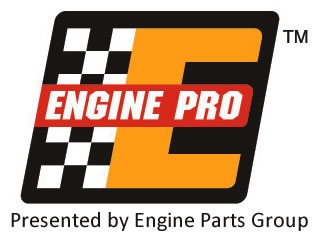Lathes: Not Just For Brakes Anymore
Our brake lathe does not see as many rotors and drums as it once did, but we are finding new uses for this great machine. With its large assortment of adapters and cones, it becomes a natural for mounting hard-to-hold parts for machining. When I need to cut an engine sleeve to length, I simply mount the sleeve on the brake lathe spindle using two cone adapters. I turn the cutting tool holder bar upside down and then mount a brake lathe tool bit in the tool holder.
This same set up works great for machining lightly scored automatic transmission clutch drums and planetary gear sets, which have been damaged from a worn out band. I use a magnetic base dial indicator to check my set up.
After machining a clutch drum or planetary gear set, we polish the surface with our crankshaft belt polisher while it is still in the machine.
Jerry McLain
McLain’s Automotive Machine Shop
Cuba, MO
From Scrap To Cash
Managing your scrap is an everyday chore. We all know aluminum pistons are worth more than aluminum mill waste, but by removing pins and rings they’re worth even more. There are special buyers for aluminum out there, and they will also buy aluminum heads. Crankshafts are clean #2 and worth more than plain cast iron heads and blocks.
It is fine putting all steel together such as bolts, rings, wrist pins and milling scraps. Separating out bronze pin bushings, guide liners and pilot bushings can bring more value.
I know space can be limited, but if you can find room to separate and keep it organized this will make you money.
Darrin Anderson
Sterling Bearing Inc.
Kansas City, MO
Got A Handle
I like to use my Serdi pilots as go/no-go gauges when I hone valve guides. I made this aluminum handle from a piece of 1-1/2” diameter rod.
I turned the outside for a comfortable grip and bored the center to hold my pilots. I select the appropriate one for my guide clearances and hold it in the handle to make it easy for checking when I get close to size. Also, a tight pilot gives me excellent concentricity.
Randy Torvinen
Torvinen’s Machine
Menahga, MN
Resizing Valve Seals
Every once in a while we get metal clad stem seals that just don’t fit snugly enough on the guide to suit us. Because of the volume of metal clad seals we use and my unwillingness to throw them away or send them back, we have a drawer full of new unusable seals. We have tried several ways to make them fit tighter, but every way we have tried distorts either the metal part or the seal part.
My final solution is to use a tubing flaring tool. The 5/8˝ tubing size works perfectly for .502 seals. You don’t even have to use the screw clamps to do the job, just set the seal in the tool, close the other side of it, and hit it with a brass or dead blow hammer once or twice. The seal will now be wedged small enough to tightly grip the guide.
Other sizes of the tool will fit other size seals too. For the ones that I couldn’t find the right size, I reamed my spare flaring tool to the proper diameter as needed.
Lately, I have picked up several used swap meet flaring tools to modify whenever required.
Timm Jurincie
Tuf-Enuf Auto & Marine Performance
Avondale, AZ
Getting The Boot
Many Toyotas and Hondas have spark plug tubes on the cylinder heads. When these heads get overheated, it can melt the spark plug boot in the tube. Consequently, some of these tubes do not come off.
There is a way to get the boot out quickly and easily: with the cylinder head removed from the vehicle, break off the bottom of the spark plug. Find a tap that you can start to thread into the bottom of the spark plug. By screwing this in from the combustion chamber side, you will unscrew the plug from the head.
With the plug free, it will be easier to pull it and the plug wire free from the spark plug tubes.
Jimmy Casares
Hubbard Machine
Hayward, CA
Measuring Tool Maintenance
I was once in a shop where the dial bore gauge setting standards were so worn on the Sunnen CF1126 that it messed up every job in the boring department because no one noticed. The ends of the changeable standards had divots worn in them from years of rubbing by the carbide balls in the dial bore gauge.
The Sunnen rep was called and he said he had never seen such a worn out set. He took our set until he got the new standards for our set and had the dial setting fixture calibration checked.
It’s just a matter of watching the needle when dropping the dial bore gauge into the cylinder. If it jumps just before the gauge is seated, you have wear. Everyone should know this, but everybody in that shop missed it.
The 3 torque wrenches in the assembly department were 10, 15, and 20 pounds low at 65 foot pounds when I checked them against a Craftsman beam type torque wrench just for fun one morning. I verified it against an almost new Craftsman wrench. This is such an issue that ARP fasteners actually has a torque wrench tester on the mobile trailer that they take to NHRA races, to verify the torque wrench settings for racers using their fasteners.
I believe these problems exist in shops all over the country. When was the last time you checked the calibration of your tools?
Wayne Petty
Wayne’s Auto Works
Los Angeles, CA














